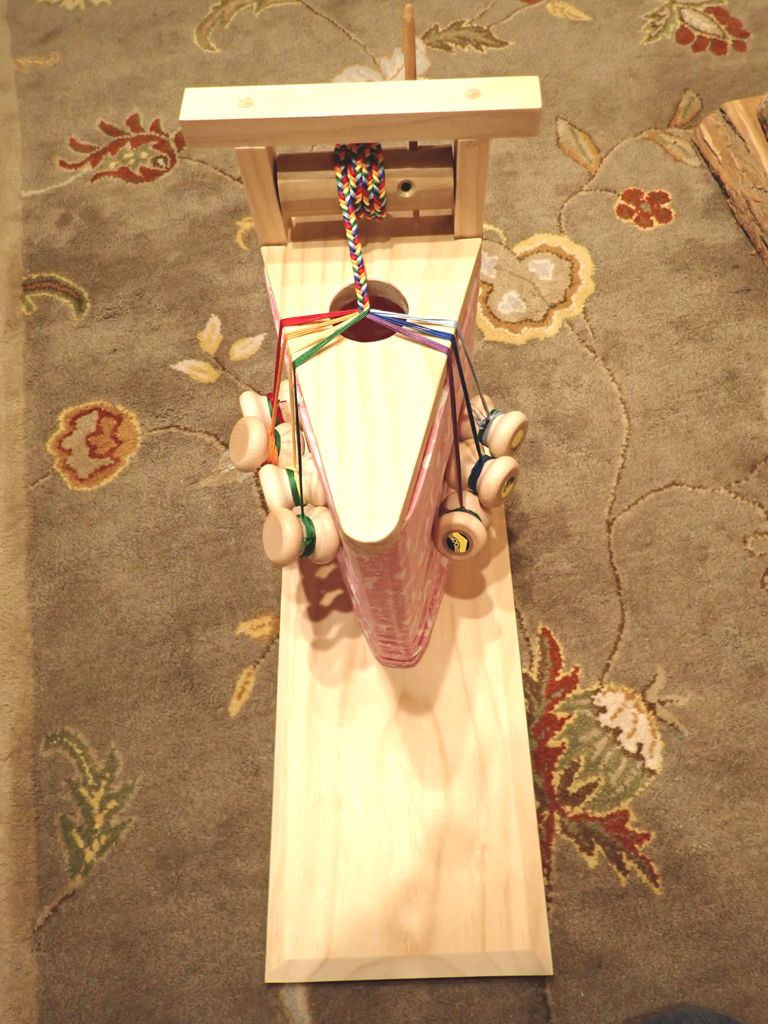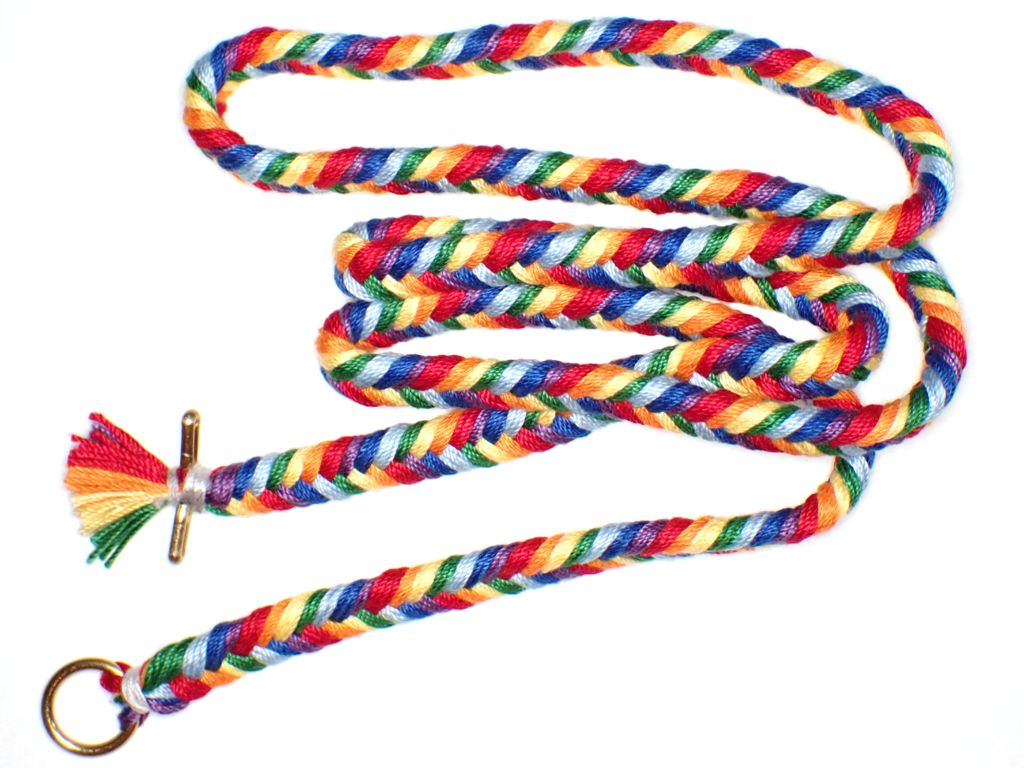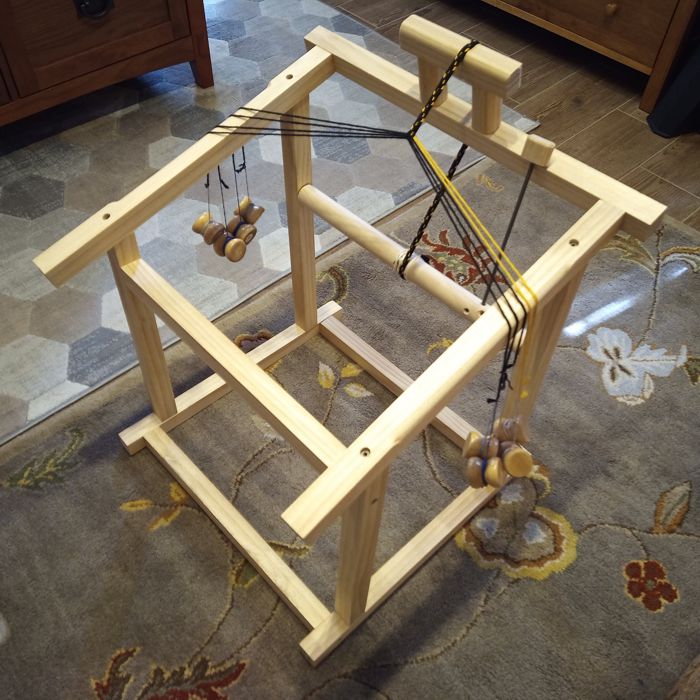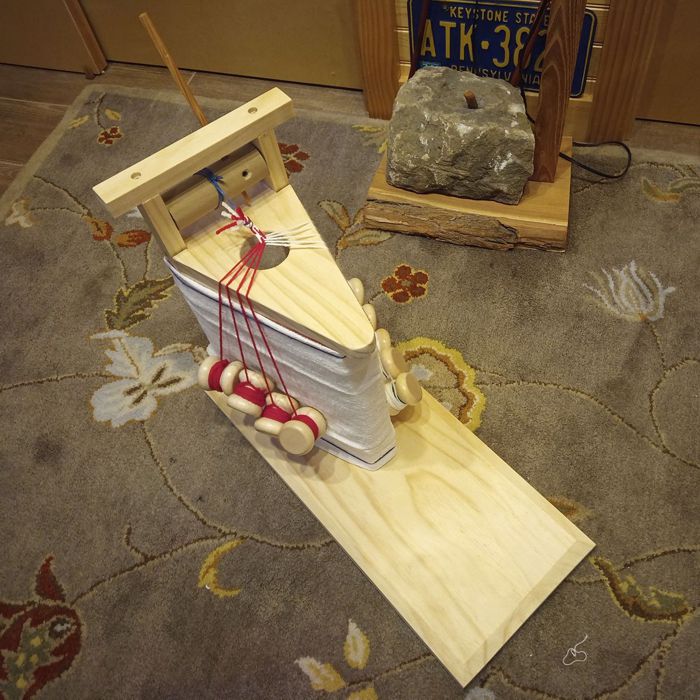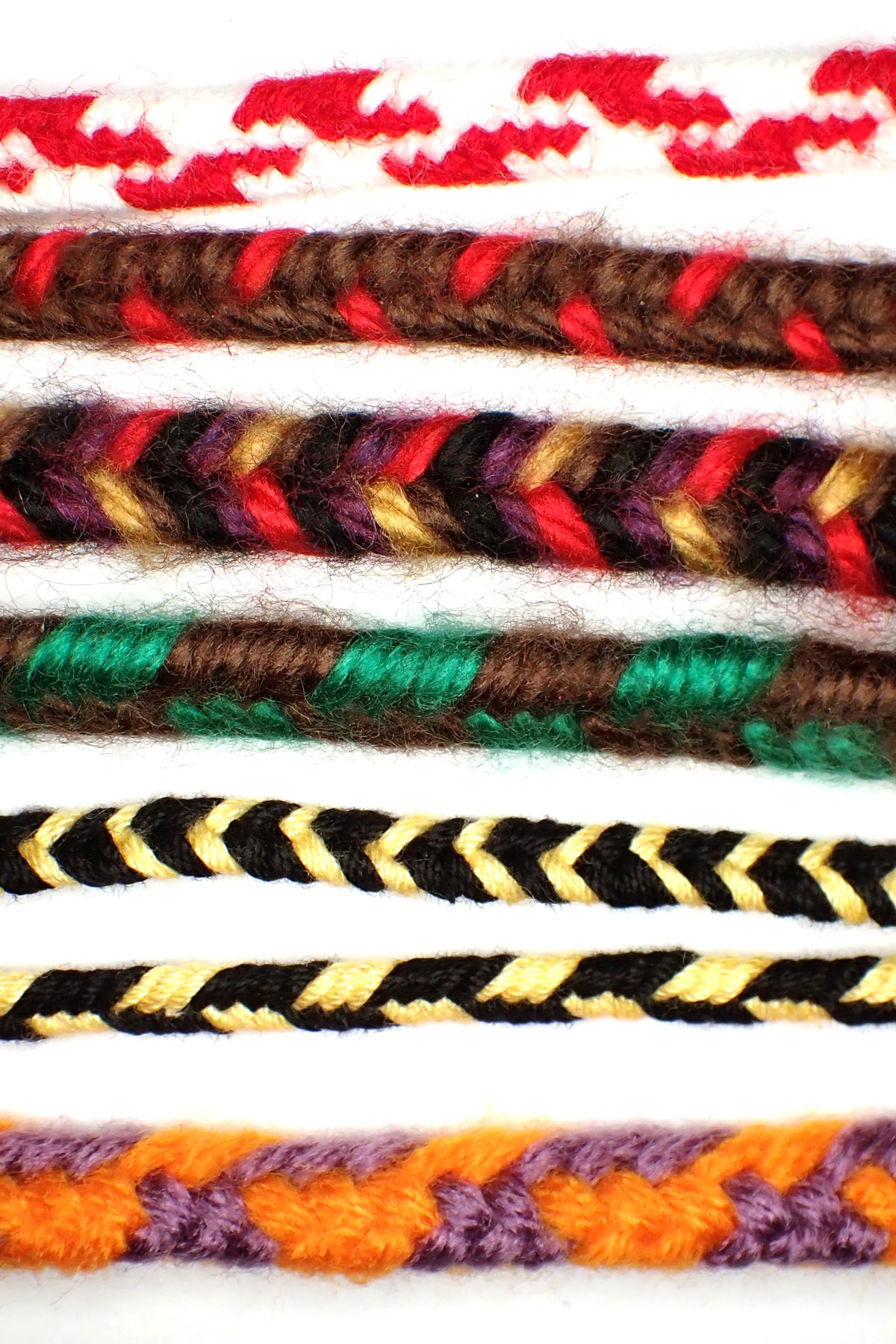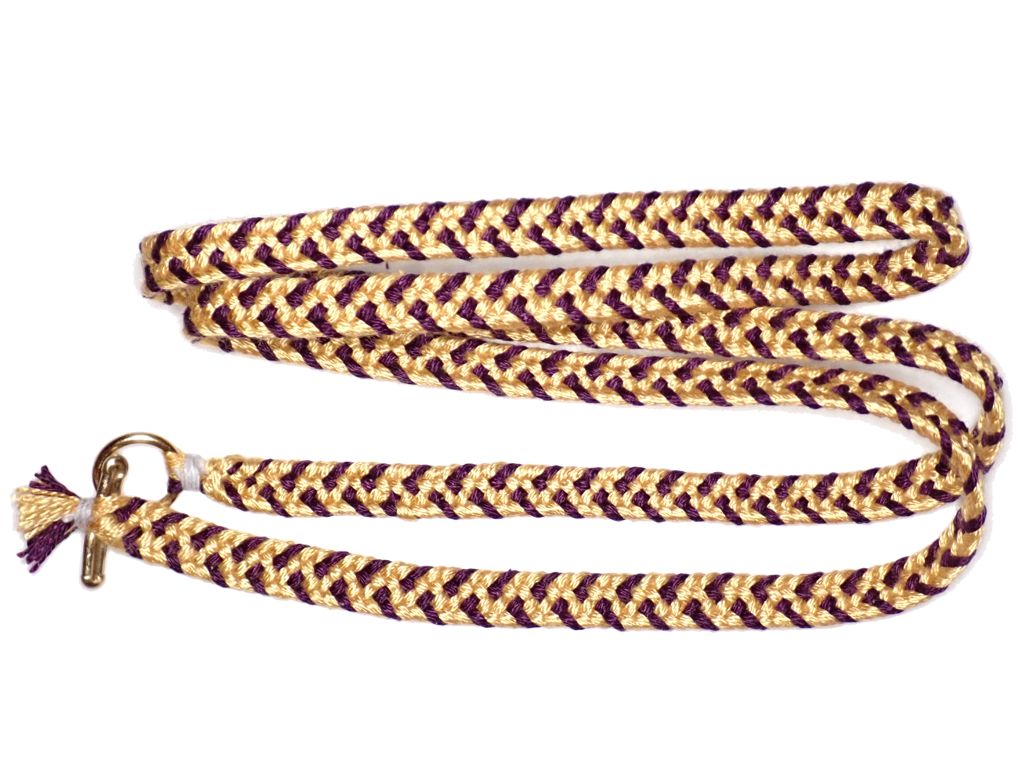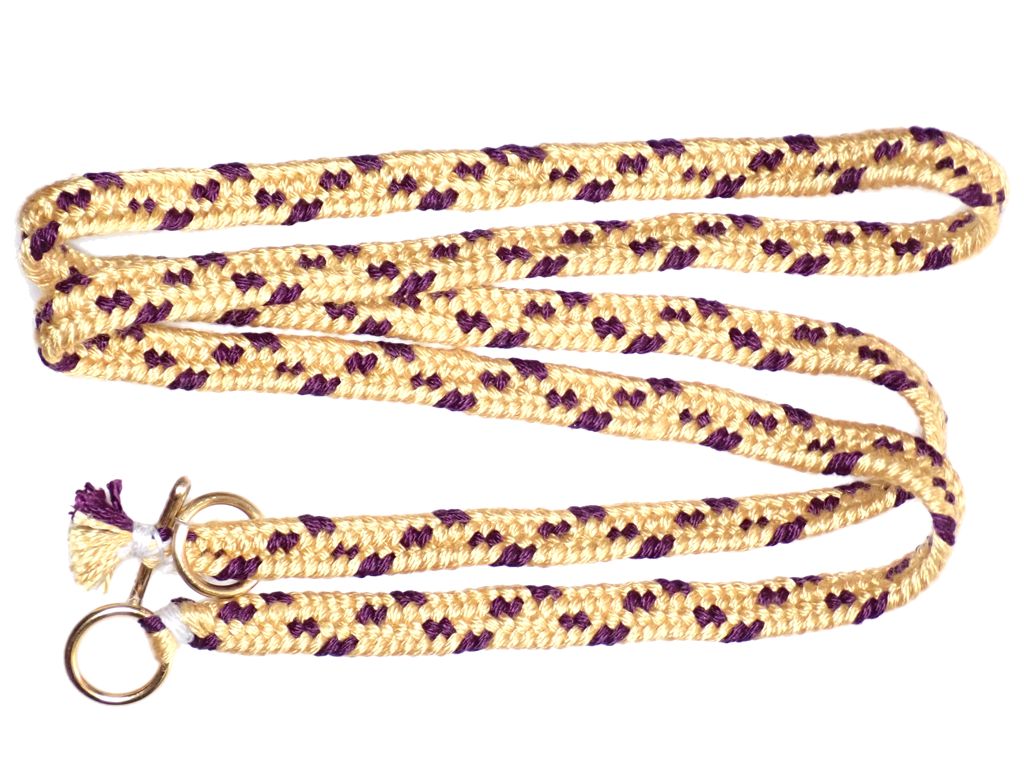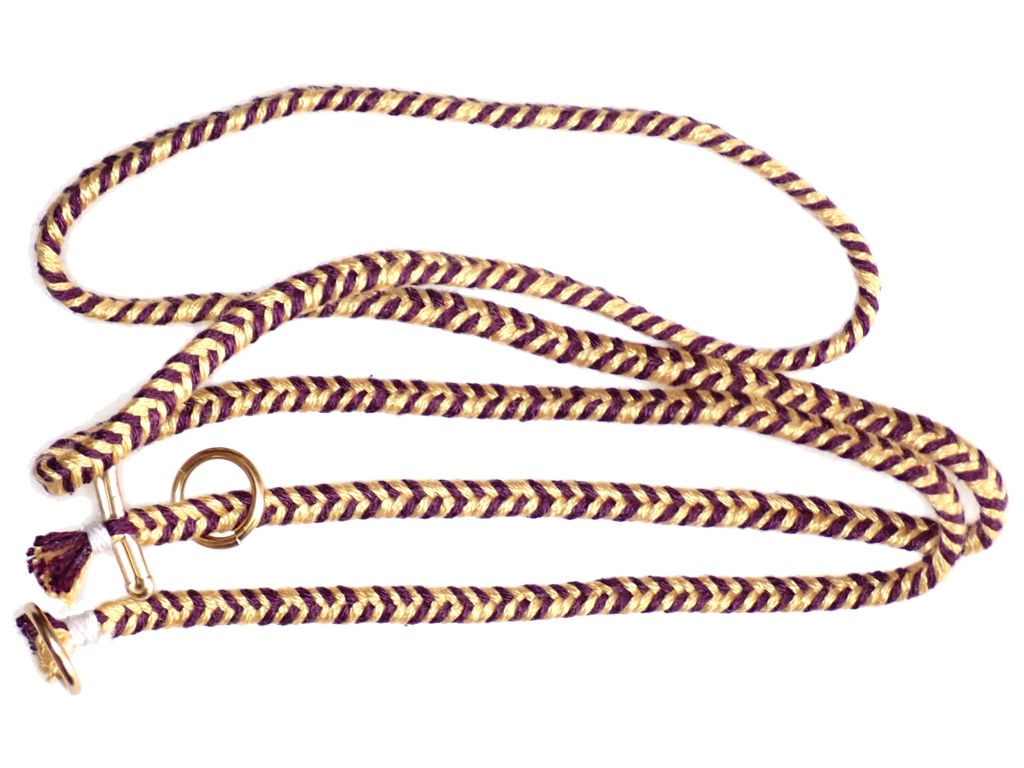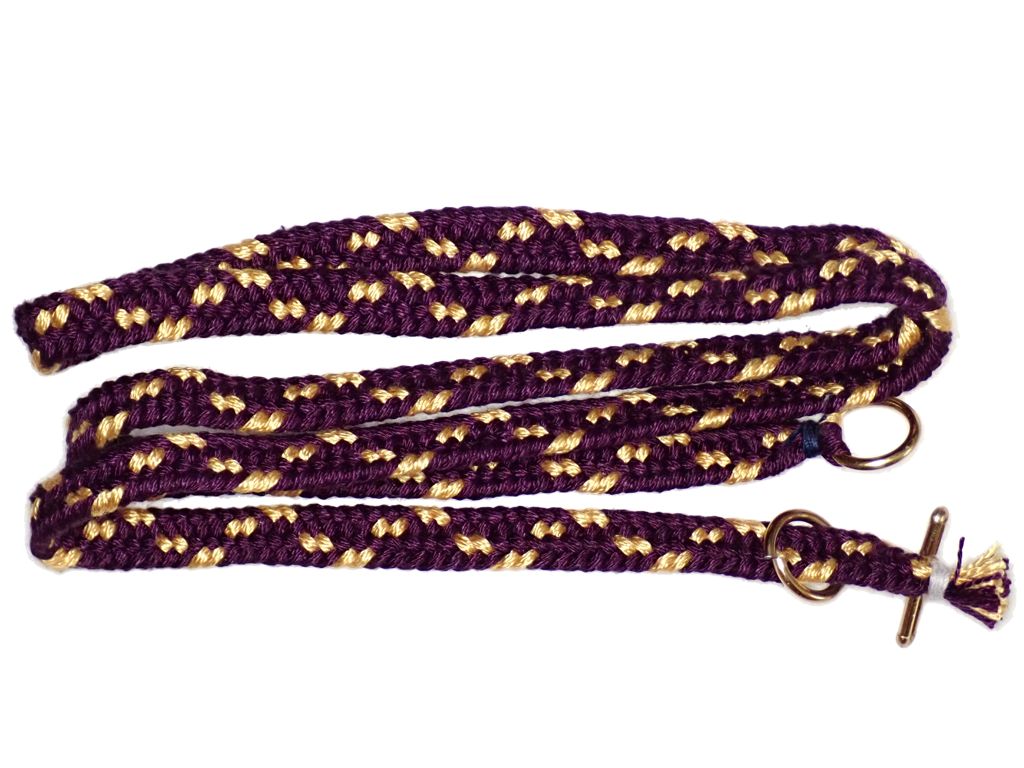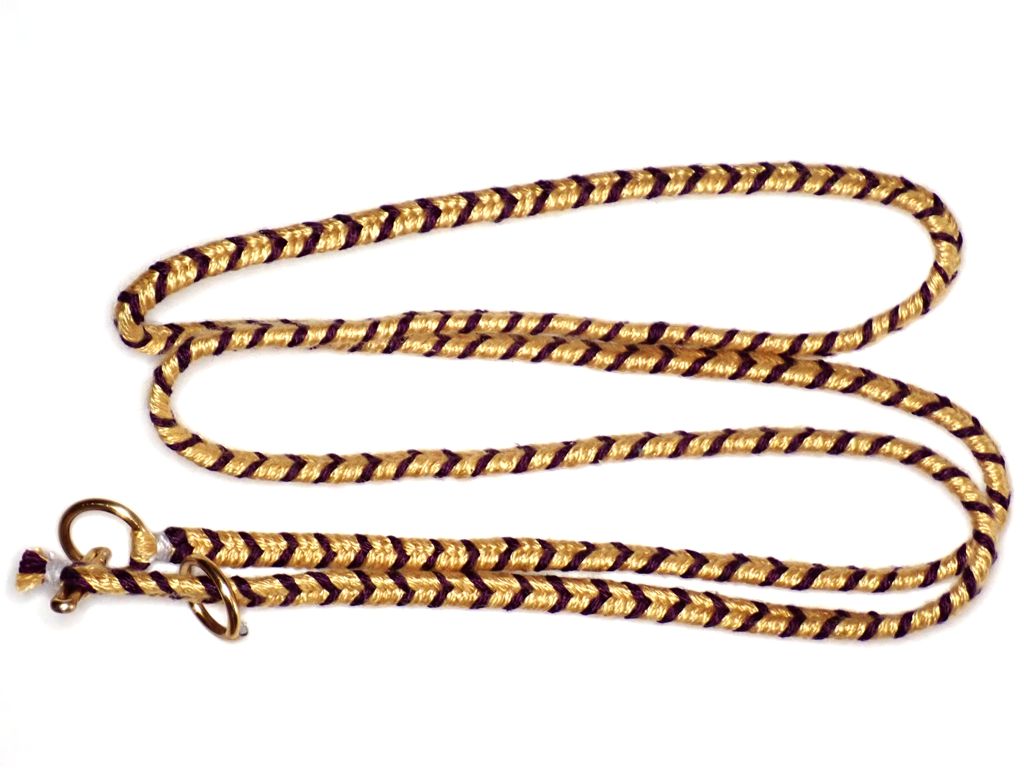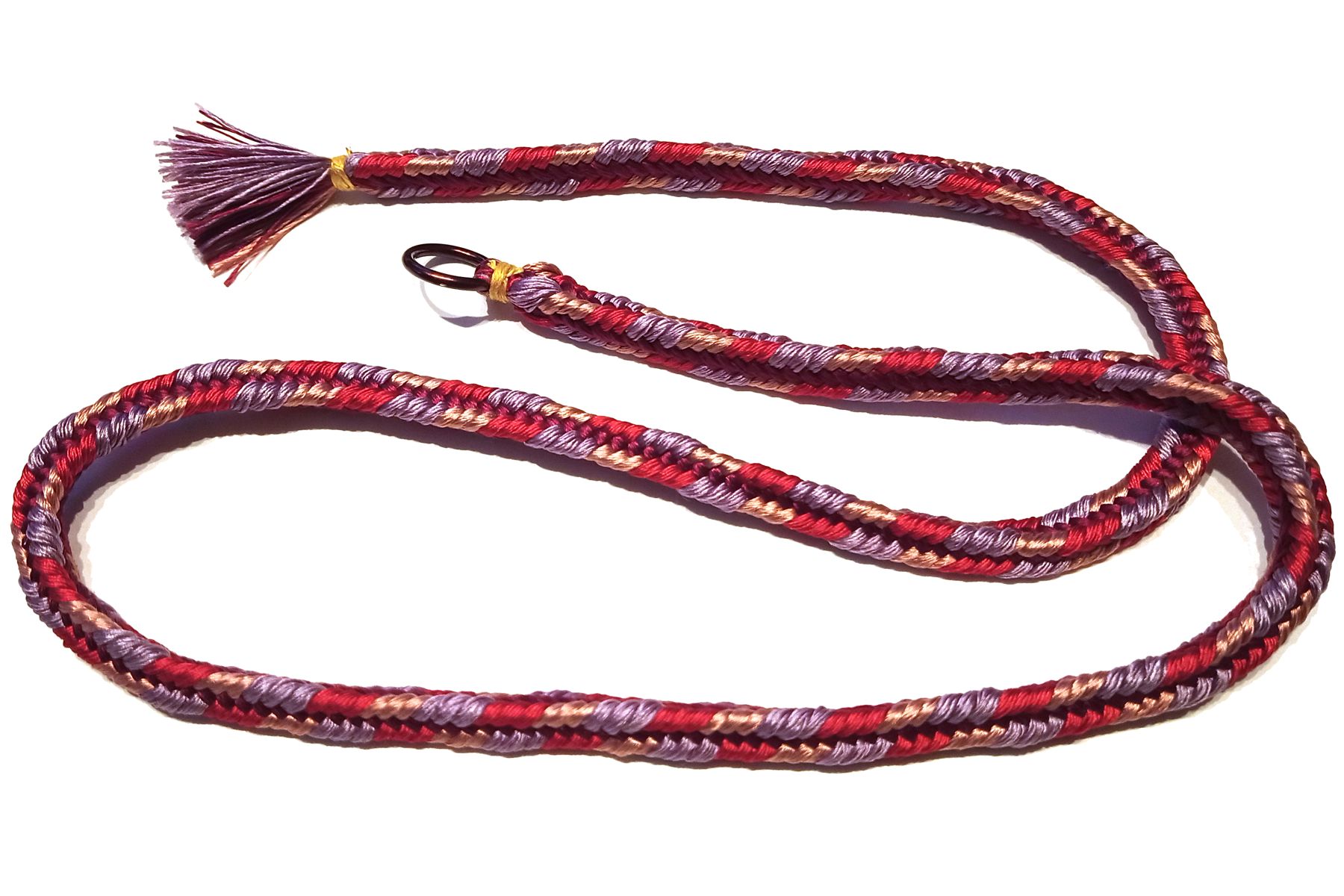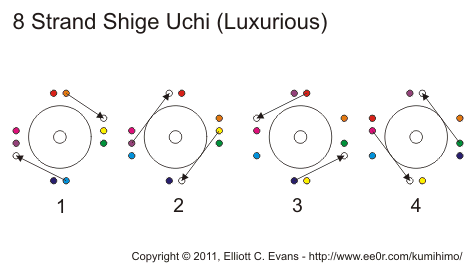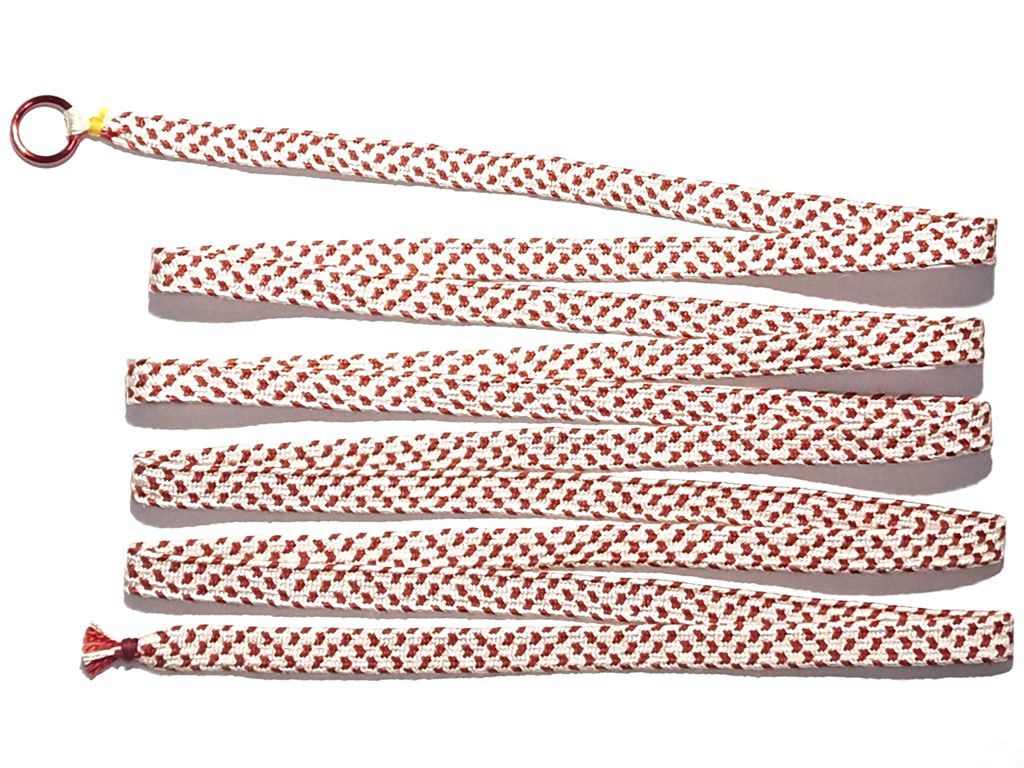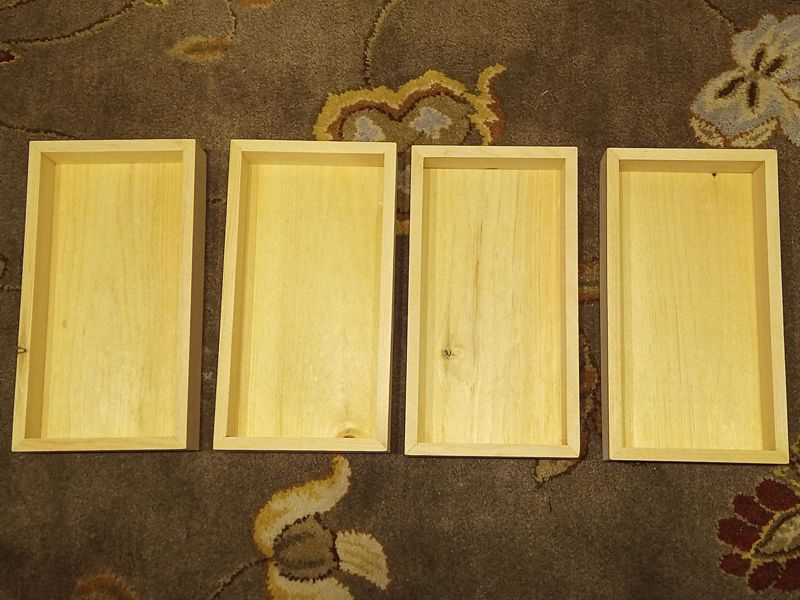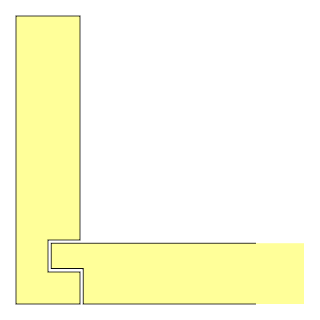When the call went out before Pennsic for largesse items to be gifted to the East Kingdom, one of the suggestions was “rainbow” color schemes. I did all my braids in purple and gold to match East colors, but the rainbow idea stuck in the back of my mind. I later realized that as possibly the only person in North America to own a traditional Japanese sankaku-dai, I was maybe the only person in the SCA who could create braids in the classic 7-color “Roy G. Biv” (red, orange, yellow, green, blue, indigo, violet) rainbow pattern. Seven-strand braids are possible on other braiding stands, but they are fast and smooth on the sankakudai.
To work a 7-set braid on the sankakudai, you lift the top strand on left, and move it over the other left-hand threads to become the bottom strand on the right. Then you do the same from right to left. When the point of braiding gets too close to the tip, use the roller to pull it back towards the torii. When the tama get too close to the mirror of the dai, extend them as you would on a marudai. You can add twist to the strands or not, as you please. I have found very little difference in the resulting braid, but that may be because of the material I am using.
Here are the 3 rainbow braids I made in one evening on my sankakudai:
Adding more ends per strand make a braid that is only a little wider, but much softer. I am really glad I tried this braid, and happy to add it to my repertoire. These braids are cheerful and friendly, and I know that people will enjoy receiving them.

